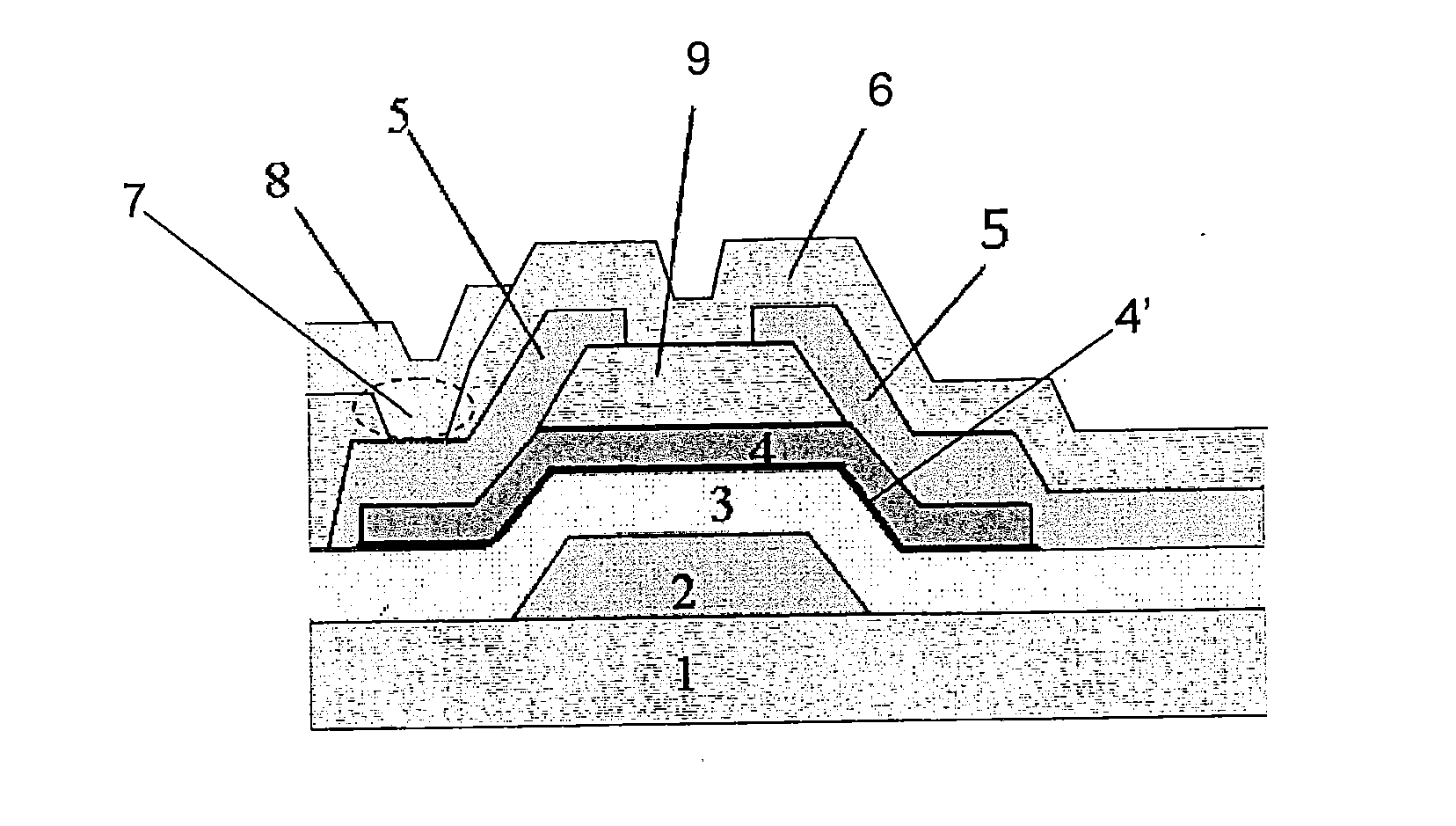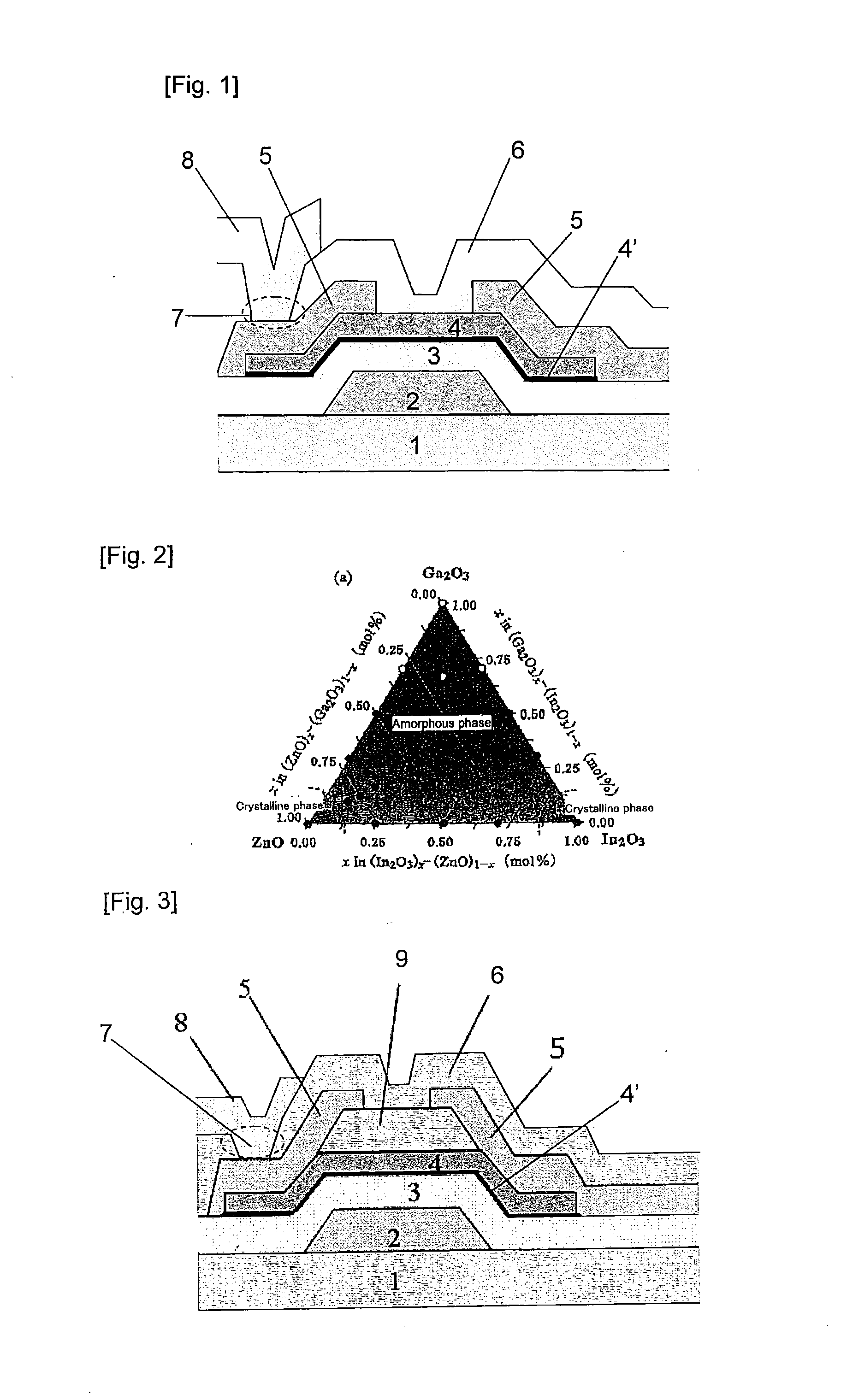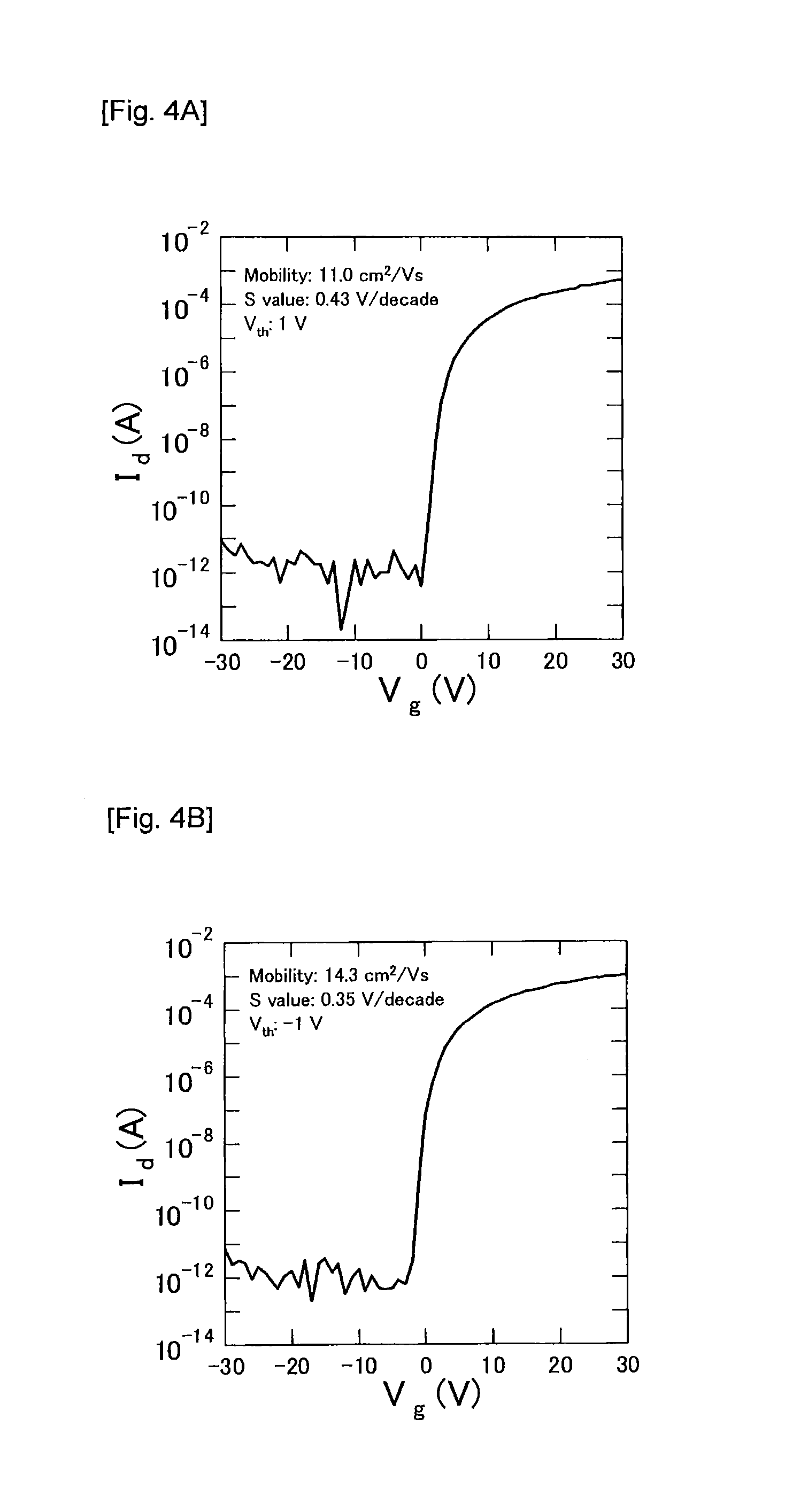Interconnect structure and sputtering target
a thin film transistor and interconnect structure technology, applied in the direction of electrolysis components, vacuum evaporation coatings, coatings, etc., can solve the above-described deterioration of tft characteristics by stress, lowering of reliability in the display device itself, etc., to achieve excellent switching characteristics, small variation, and high stress resistance
- Summary
- Abstract
- Description
- Claims
- Application Information
AI Technical Summary
Benefits of technology
Problems solved by technology
Method used
Image
Examples
examples
[0078]The present invention will hereinafter be described more specifically by way of Examples, but the present invention is not limited to the following Examples. The present invention can be put into practice after appropriate modifications or variations within a range meeting the gist described above and below, all of which are included in the technical scope of the present invention.
experiment 1
[0079]According to a method as described above, a thin-film transistor (TFT) shown in FIG. 1 was produced, and TFT characteristics before and after the formation of a passivation layer (insulator layer) 6 were evaluated (in this experiment, an etch stopper layer 9 was not formed).
[0080]First, a Ti thin-film of 100 nm in thickness as a gate electrode 2 and SiO2 (200 nm) as a gate insulator layer 3 were successively formed on a glass substrate 1 (“EAGLE 2000” available from Corning Incorporated, having a diameter 100 mm and a thickness of 0.7 mm). The gate electrode 2 was formed using a pure Ti sputtering target by a DC sputtering method under the conditions: film formation temperature, room temperature; film formation power, 300 W; carrier gas, Ar; and gas pressure, 2 mTorr. Further, the gate insulator layer 3 was formed by a plasma CVD method under the conditions: carrier gas, a mixed gas of SiH4 and N2O; film formation power, 100 W; and film formation temperature, 300° C.
[0081]Then...
experiment 2
[0124]Various TFTs were produced in the same manner as Experiment 1 described above, except that the kind of the Y group element contained in the second oxide semiconductor layer in the oxide semiconductor layer (a layered product formed by the first oxide semiconductor layer (IGZO) and the second oxide semiconductor layer (IGZO+the Y group element)) of the present invention was changed. The composition of IGZO (the Z group element and the X group element) in the first oxide semiconductor layer and the second oxide semiconductor layer was set to be In:Ga:Zn=2:2:1. The first oxide semiconductor layer was set to have a thickness of 50 nm and the second oxide semiconductor layer was set to have a thickness of 5 nm, and both layers were formed in a continuous manner using a DC sputtering method. The TFTs were measured for TFT characteristics and subjected to the stress test. The results are shown in Table 1.
[0125]In Table 1, the threshold voltage variation Δth=−6.2 V (1 hour) in the str...
PUM
| Property | Measurement | Unit |
|---|---|---|
| Thickness | aaaaa | aaaaa |
| Thickness | aaaaa | aaaaa |
| Density | aaaaa | aaaaa |
Abstract
Description
Claims
Application Information
 Login to View More
Login to View More - R&D
- Intellectual Property
- Life Sciences
- Materials
- Tech Scout
- Unparalleled Data Quality
- Higher Quality Content
- 60% Fewer Hallucinations
Browse by: Latest US Patents, China's latest patents, Technical Efficacy Thesaurus, Application Domain, Technology Topic, Popular Technical Reports.
© 2025 PatSnap. All rights reserved.Legal|Privacy policy|Modern Slavery Act Transparency Statement|Sitemap|About US| Contact US: help@patsnap.com



